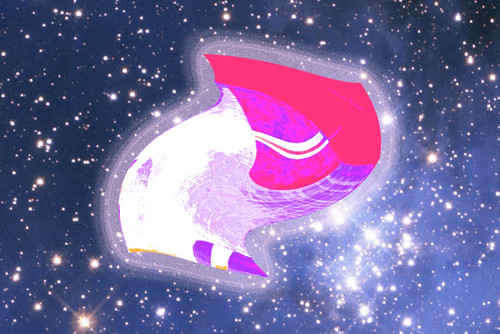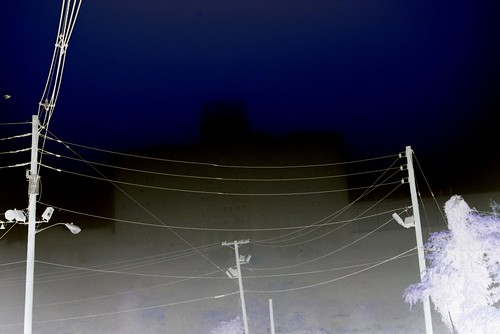Ursula Heise has a critical review of Morton’s Hyperobjects in, well, Critical Inquiry. But I’m ahead of myself, just a bit.
I first met Morton at Stanford’s Arcade and was drawn-in. I started reading his posts and thought them crazy, but intriguing. When he started writing about hyperobjects I went nuts. Well, not really, not quite. Nor did I know who this Graham Harman fellow was that he kept referring to, the withdrawal ninja. Object Oriented Ontology sounded strange, but though Continental philosophy nurtured me in my intellectual youth, it’s long sounded strange to me.
At one point I offered a query/critique to one of his posts – which you won’t find there now, as Arcade seems to have scrubbed its blogs of comments (why?). He’d offered plutonium as a bog-standard hyperobject – it's all over the damn universe and thus massive in scale, long half-life and thus massive in time: characteristics of hyperobjects – and dwelled on its weirdness. And THAT bugged me: why this weirdness fixation? So I asked him about it, offering sodium or chlorine (I forget just what) as examples: Aren’t they also massively distributed in time and space, live long, but not weird (they’re the constituents of table salt)? His reply: Well, there you go.
Not satisfactory, but then it was also clear that he wasn’t about to give me the kind of satisfaction my query sought. So I decided not to go there any more.
I continued to read his posts, got ahold of Harman’s book on Latour, started reading (and blogging about) Latour, went to the 2011 OOO meeting in NYC (across the river from my beloved Jersey City), where Harman told me that The Quadruple Object would give me his philosophy in a nutshell, blogged a post in which I nominated three phenomena for consideration as hyperobjects: the world-wide graffiti wall, the music-making group, and the literary text (as extended through the minds of readers).
Which is to say: I was into it, in my own way. I spent much of my time over the course of a year and a half to two years to working these things through, mostly Latour, but also Harman, Morton, Bennett, and even Levi Bryant (and with help from Terry Blake). After writing I don't know how many posts from squibs to long-form essays I reached some conclusions about pluralism which I summed up in eight propositions about pluralist metaphysics listed at the end of this post. And that, more or less, was it.
That journey was VERY important to me. It gave me a framework in which, among other things, I could better understand the relationship between ethnical criticism and naturalist study. I wouldn’t have gone there without Morton.
But I can’t say the hyperobjects have stuck with me as a crucial conceptual tool. Or at least not for my thought. Obviously, however, others are of different minds. While Hyperobjects is currently (today, 3 July 2014) only #34,660 over all, it’s #12 in criticism, #35 in metaphysics, and #49 in environmentalism at Amazon. That’s pretty good. And Morton just gave the Wellek lectures at Irvine.
Which brings me to Heise’s review. It begins:
Here's the good news about Timothy Morton’s Hyperobjects: Whatever you may be looking for by way of a theoretical concept, paradigm, or major event, you’ll find it here. Quantum theory, Hiroshima, the extended phenotype, the Anthropocene, the Prisoner's Dilemma, irony, cynicism, postmodernism, deep time — it’s all here.
That opening phrase, of course, primes us to expect, at some point, some bad news. But not in the second paragraph, which opens:
There's even better news. In working toward an environmental perspective beyond materialism and the here-and-now, Hyperobjects engages the important theoretical issue of scale, which implicitly or explicitly underlies many current discussions in the humanities about such concepts as big data, deep time, the Anthropocene, slow violence, and species thinking.
The third paragraph begins with the other shoe:
Here's the bad news: It is not easy to make out what Morton is actually saying about the problem of scale.
Fourth paragraph:
But, worse news, this is not even the major problem. More difficult for Morton's argument is his seamless transition from the subatomic realm of the extremely small to the cosmological realm of the extremely large without any discussion of the fact that theoretical physicists have found it very difficult to reconcile quantum mechanics with relativity theory.
Well, yeah, Morton does seem to have trouble with science. (I've not read this book, but I've read many of his posts, some articles, and chunks of The Ecological Thought.) He takes science seriously, which is good, but he’s not very careful with it, which is not so good. And THAT’s a tough one: Just how can non-specialists deal with scientific thought in a serious way?
The fifth paragraph is about Morton and history, with hyperobjects serving him as historical markers. In particular, they mark the Anthropocene.
Sixth paragraph (of eight):
But, perhaps most importantly, hyperobjects are Morton's tools for doing away with a romantic notion of nature that he attributes to environmentalism, as well as with any idea of a Heideggerian "world" in which humans might find a home if they overcome the alienations of modernity. By insisting on the "weirdness," "uncanniness," "monstrosity," and "strange strangeness" of natural as well as human-made objects and environments, Morton seeks to unsettle any aspirations toward harmony or balance with a nature construed as "over there" or "'over yonder,'" separate from humans (pp. 113, 155, 174).
That’s the stuff, though Heise notes that other environmentalist thinkers have already moved beyond nature as “over there.”
In her seventh paragraph Heise notes that Morton’s thought is replete with contradictions and in her eighth she points out that Morton himself seems to regard that as a feature not a bug (my language, not hers). Morton has made
so many self-cancelling claims about hyperobjects that coherent argument vanishes like the octopi that disappear in several chapters in their clouds of ink, Morton's favorite metaphor for the withdrawal of objects from the grasp of human knowledge. What the reader is left with is — well, ink and cloudiness.
And so it goes. And yet one has the impression that Heise was not altogether unhappy at having read the book, incoherent though she’s found it. After all, how often do you meet a thinker who takes a whack at the whole ball of wax?
Addendum: the Eightfold Way
I first blogged these in this post in January 2013: Living with Abundance in a Pluralist Cosmos. The term “abundance” is from Paul Feyerabend.
1. Objects: Individual entities of many different scales are the ultimate stuff of the cosmos.
2. Abundance: These entities enter into relations with other entities but are never exhausted by any of their relations or even by their sum of all possible relations.
3. Realms of Being: In the large, objects exist in patterns of relatively stable interactions among multiple objects. These are relations of indirect or vicarious causality. Analytically, we need to separate the roles from the entities that assume them. This is the core of what will become a distinction between culture and society.
4. Unity of Being: Humans desire the ability to access and reflect on memories of events in one’s life. The extent that that is achieved is called Unity of Being.
5. Life Way: A Latourian collective, with human and non-human members, is considered to participate in all the Realms in which any member of the collective plays a role. The ‘envelope’ of those Realms is called a Life Way.
6. Latourian Negotiation: Collectives having different Life Ways have been interacting through a process of negotiation in which differences among Life Ways are resolved and commonalities created or not depending on the desire to extend the boundaries of the larger more inclusive collective. The outcome cannot be predicted or foreseen.
7. Realms of Abundance: Realms of Being are organized into Realms of Abundance, of which three have appeared to far: Matter, Life, and Culture.
8. The Fourth Arena: The current global Latourian negotiation brings us to the edge of a fourth Arena of Abundance. If it goes well, that’s where our successors will dwell.




No comments:
Post a Comment